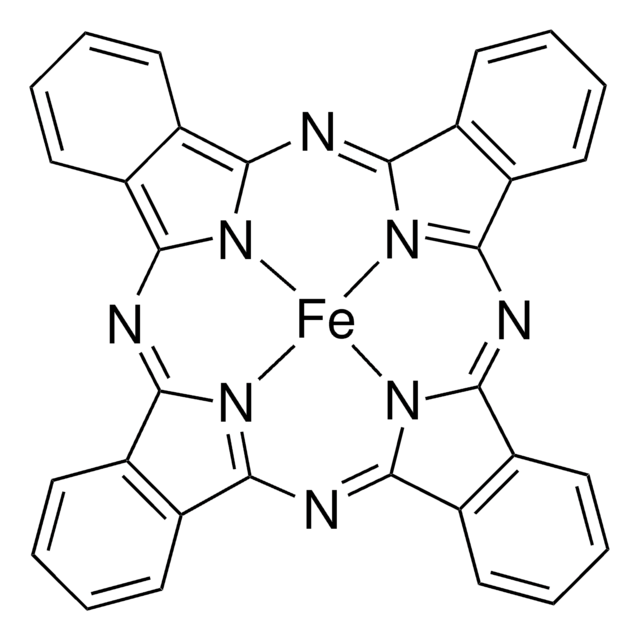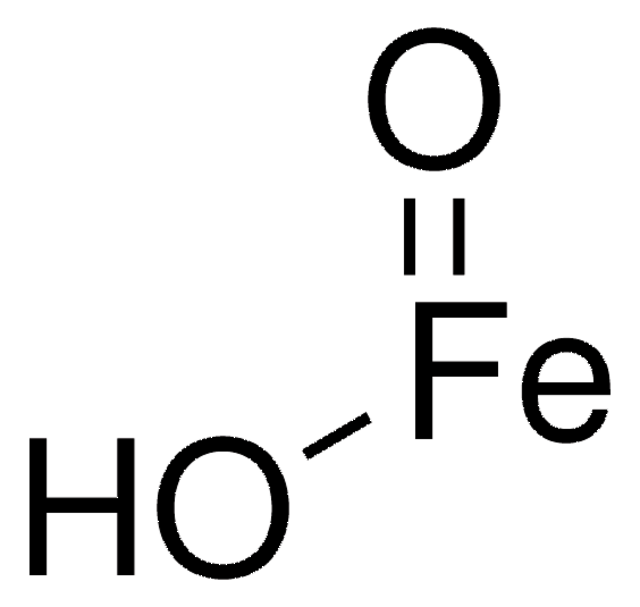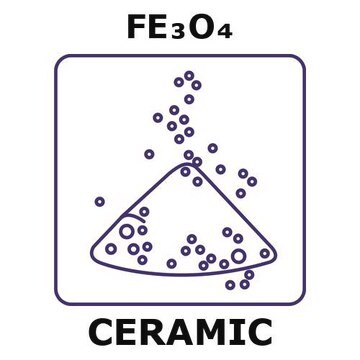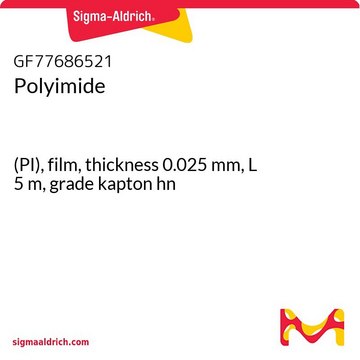310069
Iron(II,III) oxide
powder, <5 μm, 95%
Synonym(s):
Ferrosoferric oxide, Iron oxide black, Magnetite
About This Item
Recommended Products
Quality Level
Assay
95%
form
powder
particle size
<5 μm
mp
1538 °C (lit.)
density
4.8-5.1 g/mL at 25 °C (lit.)
application(s)
battery manufacturing
SMILES string
O=[Fe].O=[Fe]O[Fe]=O
InChI
1S/3Fe.4O
InChI key
SZVJSHCCFOBDDC-UHFFFAOYSA-N
Looking for similar products? Visit Product Comparison Guide
Related Categories
General description
Application
- A starting material to synthesize Ca2Fe2O5 (srebrodolskite) microspheres via a single-stage flame spheroidisation (FS) process.
- A catalyst for reverse water gas shift reactions(RWGS).
Storage Class Code
11 - Combustible Solids
WGK
nwg
Flash Point(F)
Not applicable
Flash Point(C)
Not applicable
Personal Protective Equipment
Regulatory Listings
Regulatory Listings are mainly provided for chemical products. Only limited information can be provided here for non-chemical products. No entry means none of the components are listed. It is the user’s obligation to ensure the safe and legal use of the product.
ISHL Indicated Name
Substances Subject to be Indicated Names
ISHL Notified Names
Substances Subject to be Notified Names
JAN Code
310069-BULK:
310069-2.5KG:4548173928241
310069-25G:4548173928258
310069-500G:4548173928265
310069-VAR:
Choose from one of the most recent versions:
Already Own This Product?
Find documentation for the products that you have recently purchased in the Document Library.
Customers Also Viewed
Articles
Professor Randal Lee (University of Houston, USA) discusses design considerations for iron oxide magnetic nanospheres and nanocubes used for biosensing, including synthetic procedures, size, and shape. The effects of these variables are discussed for various volumetric-based and surface-based detection schemes.
An article concerning self-propagating reactions induced by mechanical alloying, presented by Sigma-Aldrich.com.
Magnetism and magnetic materials have been of scientific interest for over 1,000 years. More recently, fundamental investigations have focused on exploring the various types of magnetic materials and understanding the magnetic effects created by electric currents.
Magnetic materials permeate numerous daily activities in our lives. They are essential components of a diversity of products including hard drives that reliably store information on our computers, decorative magnets that keep the shopping list attached to the refrigerator door, electric bicycles that speed our commute to work, as well as wind turbines for conversion of wind energy to electrical power.
Our team of scientists has experience in all areas of research including Life Science, Material Science, Chemical Synthesis, Chromatography, Analytical and many others.
Contact Technical Service





